Portraits Galore in the Nation’s Capital
Taxes Off, Time for Road Trip to DC and Back from the international Portrait Society of America’s 2018 convention at the Hyatt-Regency, a luxurious accommodation for near thousand of us.
Pick up your tickets and materials and attend the wonderful Face-Off, where 16 or more known artists paint from six or so models in a giant wheel which you can circle or sit in one of the spokes or both, snap shots of each artist’s progress and wonder which you would bid on in the later auction…which reminds you of a planned 6 x 9 silent auction on Friday evening. I missed that this year, but have a wall of several of them from other years. Follow along @Portrait Society of America. The keynote speakers were stellar.
Decades’ worth of art knowledge is crammed into various sessions, demonstrations, and slides of the greats–Daniel Greene, Everett Raymond Kinstler, and Burton Silverman. Contributing faculty members judged portfolios, spoke crystallized wisdom or demonstrated painting or drawing or sculpting on stage. Preparation in subject matter and development, in style, craft, and knowledgeable use of materials.
Years of strategy in projecting subject and painter with projectors, cameras, mirrors, and lights so what you see is both model subject and portrait painter as he progresses, side-by-side. Years of work in prizes won garnering the admiration of peers, money, accolades, and certificates at the Saturday night banquet, the Oscars event of this portrait society.
Time rubbing shoulders with those whose journey is similar though different, to see those you’ve exchanged thoughts with on Facebook and other social media, and meet some new ones.
My special picks of sessions that filled up early were Robert Liberace and the painter whose images include New York’s mosaic subways, Daniel Green. I met Virgil Elliot going and coming who has become my single best and most faithful mentor of both oil painting technique and archival chemistry. What a treat seeing him. And Luana Lucona Winner of Raleigh gave me awesome tips on my portfolio, as well as painting direction to take the coming year.
Taking my own yoghurt and dry muesli for quick eats proved helpful. Standing in line for each item tortures the feet and the soul (sole), for which no shoe made is comfortable enough.
Each talk or session gave the dream of making it that much more substance and drops of painting magic and pixie dust covered the talks, the friendships, the sessions for the next portrait commission, the next advertising push, the next International Portrait Competition. Oil painting, color principles, watercolor encouragement from Mary Whyte, a Sunday morning devotional by Paul Newton which included a stunning collection of artworks done over 6 years for the Vatican was a surprise note.
I kept missing one of PSoA’s founders, Gordon Wetmore, who died a few years back. He always knew me and spoke to me in the elevator by name.
I saw a bunch of North Carolinians.
And I got two special meals out with my husband Sandy, who is my biggest fan ever. I’ll give you an update on the particulars, later.
But my favorite picture taken, and my best sideline experience was talking to Clinton Hodges of Exec-U-Shine in the lobby and enjoying a deluxe moment of having my boots shined, and chatting. Clinton is from Selma, NC, and he let me take some photographs of him that may well show up in a later painting. Thanks to his directions, we cut at least an hour off of our return trip, as well. Thanks, Clinton, and thanks PSoA! Rock on!
Also thanks to the wonderful PSoA staff who served tirelessly, and to the wonderful gentleman who found my cell phone left within minutes! Relief–
Learn more »
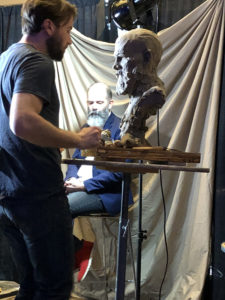
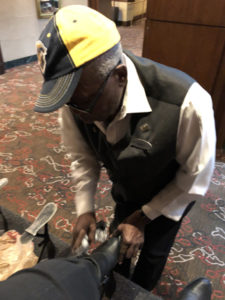
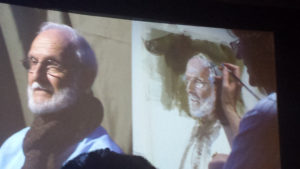
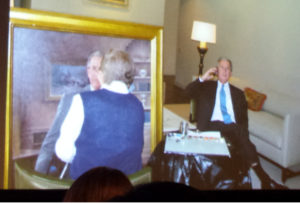 and going to the White House unveiling, and of his eight full-blown attempts to get just the right moment. Sanden is famous for his paintings and books, one of Billy Graham I have seen at The Cove, just outside Asheville. Of painting the richest women in the world. He confessed that his life work had been only 350 portraits as compared to some in our midst’s 600 already. He, like many other artists there, had been a teacher at The Artist’s League, and instrumental in turning the small class format for learning portraiture around a model and a painter into the auditorium format which turned into the: you guessed it….the Portrait Society of America (see their materials for real facts and answers to your burning questions). Several of us deemed this year’s conference of some 800 folks different. Mysteriously wonderful.
and going to the White House unveiling, and of his eight full-blown attempts to get just the right moment. Sanden is famous for his paintings and books, one of Billy Graham I have seen at The Cove, just outside Asheville. Of painting the richest women in the world. He confessed that his life work had been only 350 portraits as compared to some in our midst’s 600 already. He, like many other artists there, had been a teacher at The Artist’s League, and instrumental in turning the small class format for learning portraiture around a model and a painter into the auditorium format which turned into the: you guessed it….the Portrait Society of America (see their materials for real facts and answers to your burning questions). Several of us deemed this year’s conference of some 800 folks different. Mysteriously wonderful.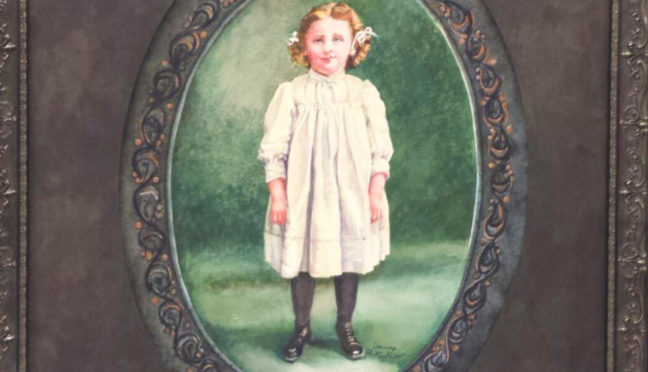
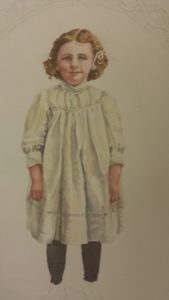
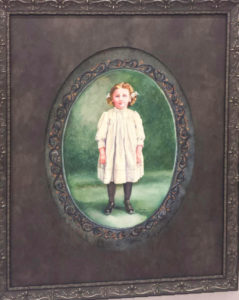
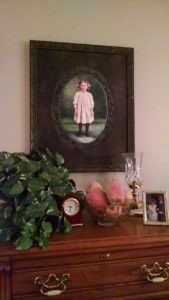 was picked, along with a mat that made the unit hang together in a way that seemed inevitable, as if it had always existed. The prince of all boxes was ordered at a princely price, and the work was sent off in fear and trembling through my favorite service who picks it up at my studio. Then I followed it on pins and needles until it was received.
was picked, along with a mat that made the unit hang together in a way that seemed inevitable, as if it had always existed. The prince of all boxes was ordered at a princely price, and the work was sent off in fear and trembling through my favorite service who picks it up at my studio. Then I followed it on pins and needles until it was received.